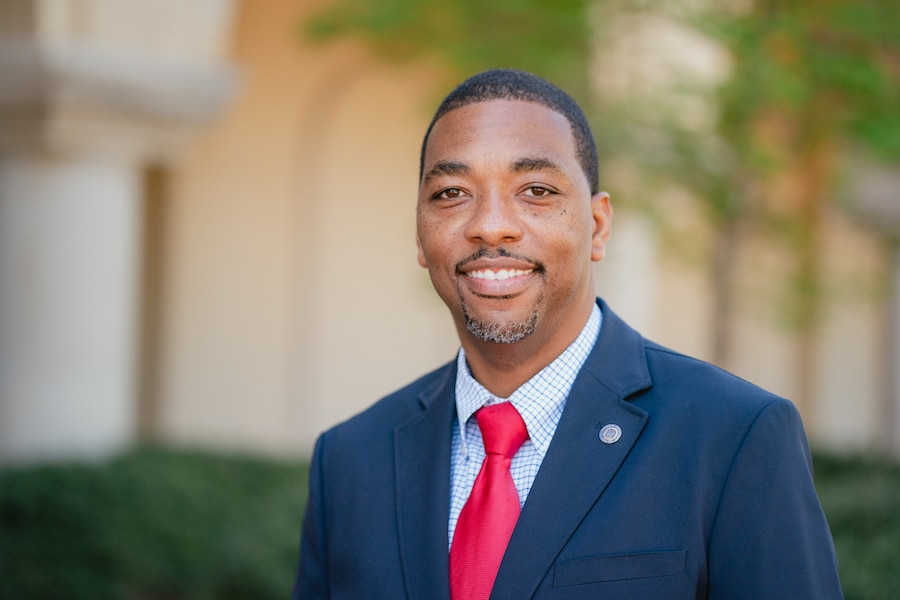|
The Southern Baptist TEXAN interviewed SBTC Missions Director Robby Partain and Senior Church Planting Associate Terry Coy in December. Partain and Coy answered questions about the SBTC’s church planting process and strategy.
TEXAN: First of all, what is the priority of planting churches in Texas? Why is it such an emphasis here in the Bible Belt, where churches abound?
PARTAIN: It’s crucial because we’re increasingly lost here in Texas. We are increasingly lost among what people perceive as traditional Texas communities–African American, white, Hispanic. But also increasingly, we have an international mission field here in Texas. The world is coming to us. We must create new works to reach them.
TEXAN: In broad terms, what can SBTC churches do?
PARTAIN: Three things: I think first of all, we need conventional church plants where there’s a founding pastor planting a new church. This is not necessarily a traditional church; it is conventional because it has a founding pastor and is attempting to reach an established community. Increasingly, more of these conventional plants need to be Hispanic in focus. Secondly, we need to deploy missionaries to unreached people groups in Texas that are not going to be reached through traditional strategies. These include Muslims, Buddhists, multi-housing communities and others too numerous to mention. The ethnic diversity in our urban areas is astounding. Thirdly, we have to develop planting partners so that more and more of the process is guided and energized at the local and associational level.
TEXAN: One of the questions people have about church planting is the percentage of congregations that survive. What is the survival rate of SBTC church plants?
COY: The last time we studied that it was around 72 percent of churches planted, at least in part, with SBTC funding. The numbers may be a bit lower than that in reality. Probably somewhere between 60 and 70 percent would be the long-term survival rate. As a state convention we are structured to know what’s going on with our funded plants. It’s beyond the funding cycle that it becomes more difficult to track their long-term success, but we have initiated an evaluation of all our churches that have moved beyond funding. Are they still around? Are they still cooperating with us? We want to determine with optimal accuracy what our survival rate is. Also, we want to assess the church planter selection process and the church planting process itself and measure the effectiveness of what we’ve done so far.
PARTAIN: It should be noted that the funding cycle in the overwhelming majority of cases is three years. So these are churches the SBTC has played a part in planting that survive beyond our funding cycle. A rule of thumb is that if a church plant reaches its fifth birthday, it’s going to make it. Nationally, half or more of them don’t. We’re committed to not just reporting the number of starts but also the number of church plant closures and to learning why they did not survive, and then adapting our ministry to what we learn from that.
TEXAN: What are some of the safeguards that help ensure the church plants the convention assists are healthy and vibrant?
COY: I’m becoming more convinced that the more local involvement there is through local churches, associations, and church planting networks, the better the process works and the greater chance there is for survival. It appears to me, at least anecdotally, that our strongest churches are those with the strongest local involvement. Simply the geographical size of the state makes it very difficult for a state convention to go it alone in planting churches. One of our overall emphases is and will be in the future to work more closely with associations and local networks in helping them to develop a good church planting process. I think we’re going to see a better working relationship with many associations. That’s where the strength is.
TEXAN: What is the SBTC doing to safeguard the integrity of funding new works?
COY: There are three streams of church plant funding. One, the great majority of our church planting budget goes to conventional church plants such as Robby mentioned—the kind of planting most people think of with a pastor, a geographic location, etc. There is always a sponsor church and in most cases an association and in some cases multiple sponsors. The funding level is based on viability, potential for growth, the ability of the church to become autonomous.
The dollar amount in funding is a partner decision between sponsors, associations and the state convention. Right now, these plants are reviewed at least every six months and we are moving toward evaluating them every four months.
A second developing stream of church plant funding is what we’re calling non-conventional church planting. Multi-housing, ministry-based efforts, house church networks, and missionary planters fall under this umbrella.
A third stream of church planting funding, which is a smaller percentage of our budget, is partnerships we have with associations or churches to assist them in developing specific church planting strategies.
TEXAN: In the non-conventional plants, do the planters get additional funds per house church or cell group they develop?
COY: No. Many state conventions and associations are trying to figure out how multi-housing and house churches should work. I think what all have learned is that funding can and should be only for a catalytic network leader or missionary, if you will.
PARTAIN: This is the biggest strategy mistake made in house church strategies. You don’t fund individual house churches nor do you pay someone incrementally more for planting new works in a house church strategy. Such funding corrupts the process and presents huge accountability problems.
TEXAN: How does the non-conventional process work then?
COY: We have learned that the funding is better spent helping to fund a catalytic strategist or ethnic missionary who wins and develops spiritual leaders and leads out in planting multiple house churches or simple churches. Each new unit—whether a Bible study, home group or apartment preaching point—is not funded. They are layman led and volunteer led. Only the catalyst or missionary is funded and that is generally at a bi-vocational rate. Further funding is considered only when another proven catalytic leader starts another network in a separate community or town.
A new track is our missionary planter track. In this case there is a person or couple that is focused on winning an ethnolinguistic people group much like an IMB strategy coordinator would. Like all non-conventional strategists, they are not planting a church per se but they are facilitating a movement of house church planting, evangelism and discipleship among various people groups within Texas.
PARTAIN: Stream two is necessary because stream one doesn’t reach everybody. How do you reach Asian and Indian college students? You have to have a strategy that differs from conventional church planting. Stream three is necessary because we can’t do everything within the state of Texas. We must have other partners. Conventional church planting is necessary, but alone it will not suffice to reach our assigned mission field.
COY: Church planting will not be effective without strong local church and associational involvement. We need more sponsor churches that will not just sign on the dotted line but also be actively involved in mentoring and helping local church plants. The most important element in planting healthy, effective churches is a team approach involving the state convention, associations and local churches.
TEXAN: What are some of the lessons you have learned about church planting and funding over the last few years?
PARTAIN: Well, certainly the state convention must be clear internally and externally about its strategy. Then enforce the process, listen to concerns and take them seriously when they arise. Also, take a hard count annually concerning the survival rates of previously funded plants. The existence of a church plant or any other funded ministry should be verified by the planter and other credible parties such as associations, churches or other local pastors. As Terry has emphasized, a good associational planting and accountability process, combined with active involvement of local partner churches, will make it much more difficult for a perpetrator of fraud to get away with it for long. A strong local process, in partnership with the state convention, benefits all parties.
|














